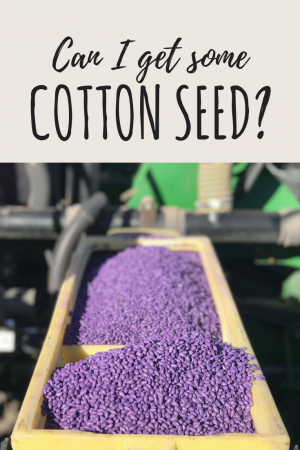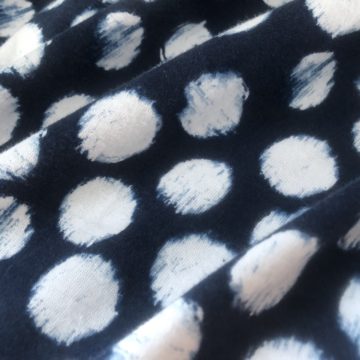 I love the excitement behind the question I get asked each spring — “Can you get me some cotton seed for my garden?” reminds me that other people would like to see the wonder that is cotton seed turning into a plant with broad leaves, slowly putting on buds that become flowers and ultimately form those beautiful bolls we all think about. (Thanks Kelly for the phot!)
I love the excitement behind the question I get asked each spring — “Can you get me some cotton seed for my garden?” reminds me that other people would like to see the wonder that is cotton seed turning into a plant with broad leaves, slowly putting on buds that become flowers and ultimately form those beautiful bolls we all think about. (Thanks Kelly for the phot!)
And as someone who loves her container garden, I get the joy of picking out some new things to try each year (confession: my rhubarb didn’t make it last year).
And I have to tell you that when I lived in NY, I actually grew a cotton plant in my office! And you may remember a blogger who planted cotton asked about why the boll was so tiny.
Simple Question, Complex Answer
The question to anyone asking is simple — like asking about basil seed in a local garden center, seed catalog or Lowes, but they haven’t seen cotton seed there, so they know there is a little twist. And they ask me.
Every time I get the question, I pause. I want to answer excitedly with resources on where to go and yet, the weight of knowing how cotton seed works, how it is sold, where it can be planted… well, that is a lot more complicated than a tweet. So let me see if I can go through this step-by-step.
Why can’t U.S. gardeners easily find cotton seed?
Believe it or not, as far as I know, one of the major reasons gardeners can’t buy cotton seed is because bugs like cotton too much! Cotton is a major crop in states across the Southern US and farmers have integrated pest management programs to help control the crops most devastating insects.
One of history’s most well-known plagues in agriculture is the boll weevil. The weevil wreaked havoc on the crop for several years even though it is not native to US. The fact that it can get established and multiply quickly has led to specific control steps under what’s called an eradication program. Farmers have had routine education and monitoring programs. They have been directed to shred stalks (kind of mow the remaining plants down) after harvest to make it harder for boll weevils to survive. They have paid money to the state to do a coordinated program. So for that reason, most states where cotton is grown have sought to limit ornamental cotton.
So you can see that cotton may be a bit different from basil seed.
Would just a little bit of seed cause a problem?
I have heard it before… “Well, maybe I could just get a handful of seed from a farmer.” There are a couple of reasons I wouldn’t do this.
- First, this is a way to get it but it really doesn’t help with the insect problem.
- Second, most cotton seed is sold under a license to the purchaser for the various traits and I’m not licensed. The license includes the various things to do to be a good steward of seed, including insect resistance methods, etc.
- And finally, seeds frequently have various coatings on them to protect from insects, diseases, etc and handling.
So, you see, I find myself not growing any cotton even though I love it. I love it from a distance and leaving the growing it to farmers.




